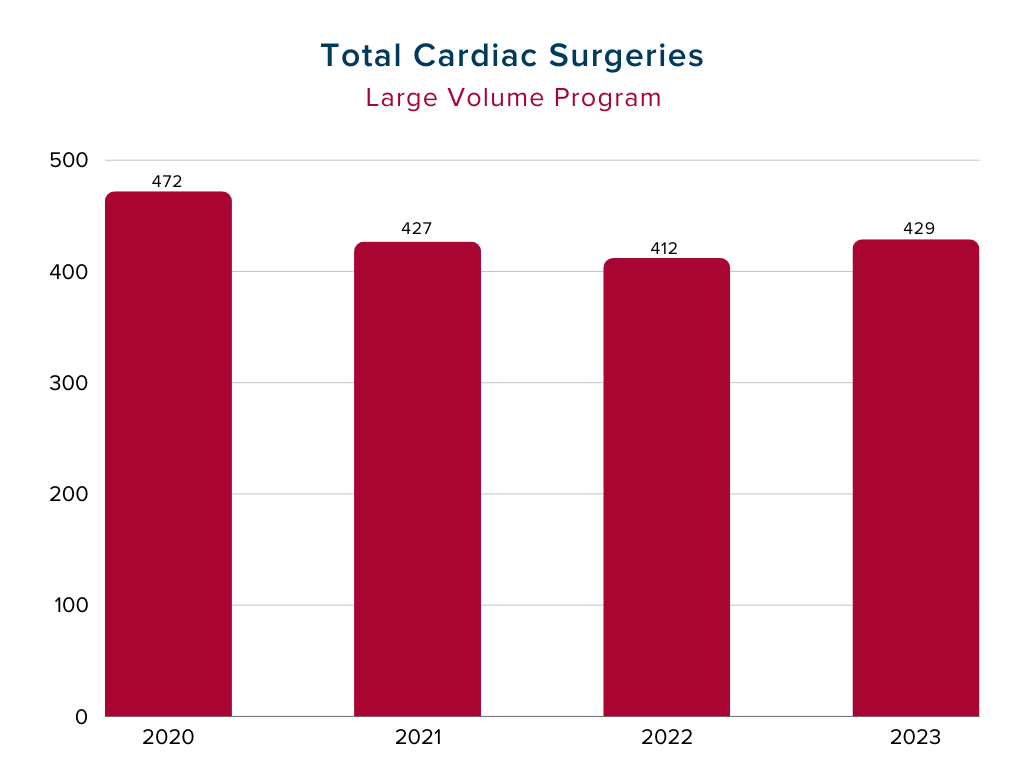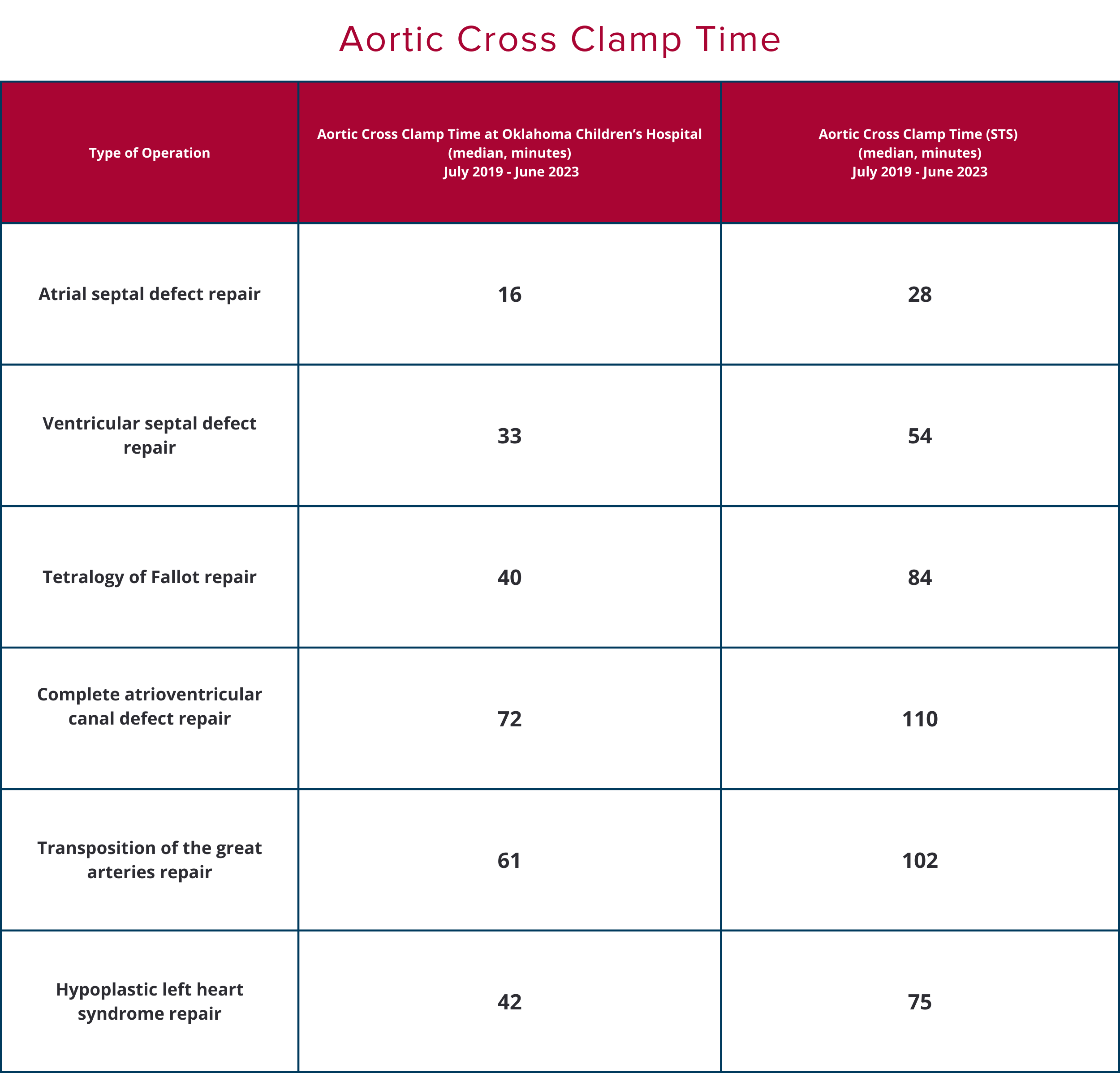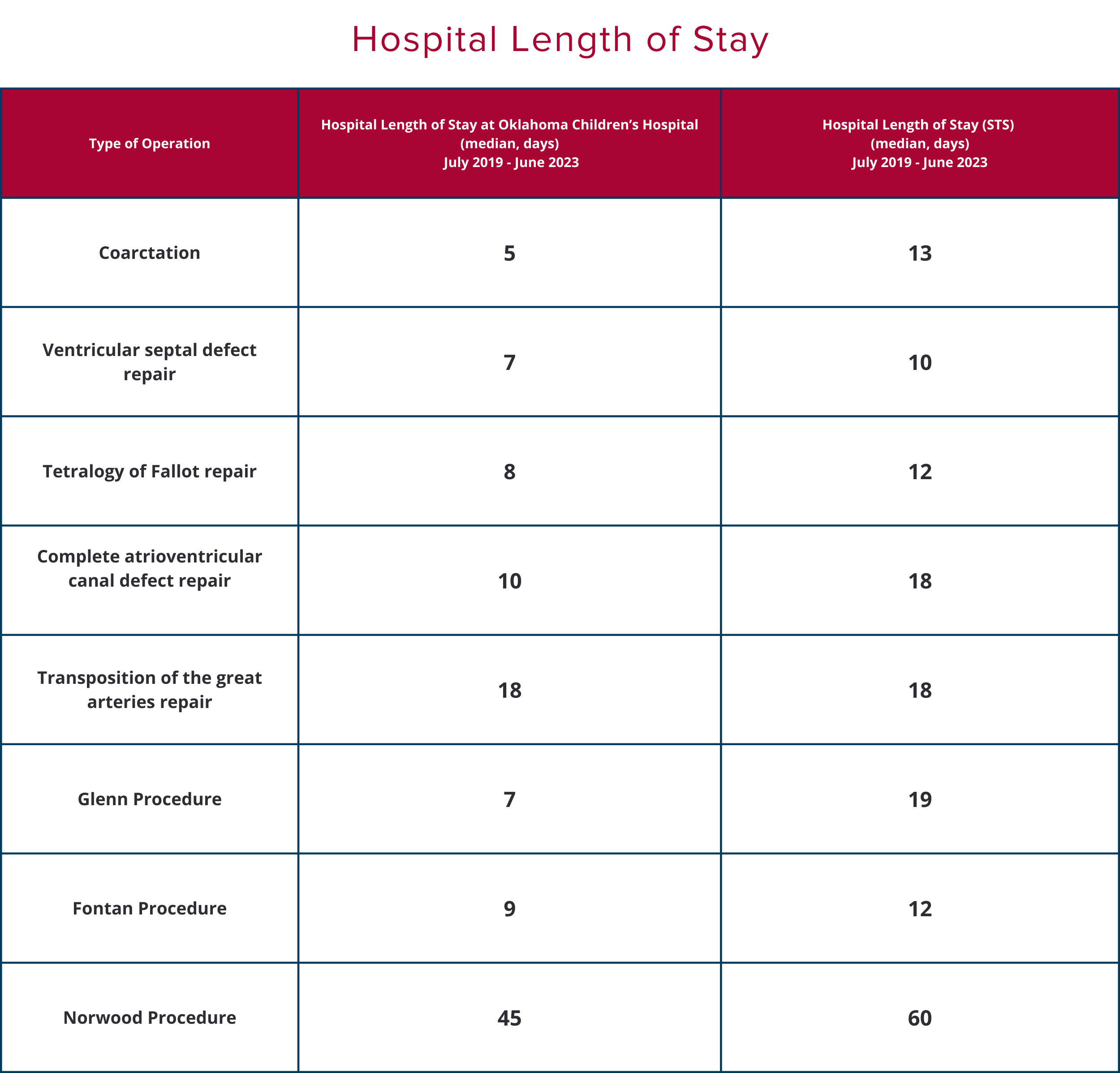Request an appointment to find out more about
innovative children’s heart surgery and services at Oklahoma Children's Hospital.
Children’s Heart Center OU Health – Oklahoma City
When you first heard the news that your child needs heart surgery, you probably felt overwhelmed. That’s exactly the time to rely on the Oklahoma Children’s Hospital OU Health children’s heart care experts and nationally recognized pediatric cardiothoracic surgeons. At Oklahoma Children’s Hospital, you’ll find the experienced and compassionate healthcare professionals to guide you and your family through your child’s diagnosis, treatment and aftercare.
To give your child the best opportunity for a long and productive life, you’ll want to take advantage of Oklahoma’s first and only comprehensive pediatric cardiothoracic surgery program, where you’ll work with pediatric heart specialists who have a history of caring for thousands of newborns, infants, children, teens – and even adults – who live with a wide range of congenital heart defects (CHDs).
At Oklahoma Children’s Hospital, you benefit from the expertise of highly trained pediatric cardiothoracic surgeons with the extensive experience of performing more than 500 heart surgeries each year. They welcome the most complex heart conditions and their results match or exceed the nation’s best outcomes (success rates).
As you look for help in deciding on next steps for your child’s heart care, check to see if a pediatric heart center measures and reports its surgical outcomes (success rates). Many, including Oklahoma Children’s, share this information as a way to help you compare hospitals and programs.
Especially in healthcare, access to information – also known as transparency – matters. You and your family have the right to know how well a pediatric heart surgery program performs. To give you the latest information about how Oklahoma Children’s Hospital evaluates success, you can rely on us to monitor and compare our cardiac surgery statistics with other top pediatric hospitals in the nation and routinely publish the results.
As you compare heart surgery programs, look at the numbers for several categories, including total survival, survival by surgical complexity, and length of stay, among others. Remember that these elements of care work together, so you’ll want to make your decision based on multiple factors, rather than one single number.
Below, you’ll see some of the pediatric heart surgery factors we measure at Oklahoma Children’s Hospital, along with our latest outcomes data.
Generally, heart surgery programs report their overall survival rate, as well as the survival rate based on the complexity of the surgery.
The percentage of children who survive open-heart surgery at Oklahoma Children’s
Hospital stands
above the national average, with a
98.6% overall survival rate for all who receive cardiac surgery, regardless of how complex the surgery..png)
A higher survival rate spotlights the experience of a pediatric heart center, how it’s better equipped for congenital heart surgery, and that fewer people pass away during or after surgery.
Because some centers, like Oklahoma Children's Hospital, accept more complicated conditions, be sure to compare survival rates by surgical complexity and type of defect.
Heart defects appear in a wide range of complexity and type, which means no pediatric heart program sees exactly the same conditions each year. To help compare results from different types of surgeries, the Society of Thoracic Surgeons (STS) created the largest congenital heart surgery database in the United States. Online and open to the public, the STS database organizes types of surgeries into five groups, known as “STAT categories.”
Based on risk or complexity, STAT categories classify heart surgeries into groups. STAT 1 describes surgeries with the lowest risk of death, while surgeries with the highest risk of death appear as STAT 5. Hospitals with a high survival rate for STAT 5 procedures demonstrate their ability to handle unpredictable situations during an operation and during recovery.
We measure survival for all 5 STAT categories- from the more straight forward cases to the most complex neonatal cases- to ensure we are providing the best possible outcomes for our cardiac patients.
Oklahoma Children’s Hospital rates above the national average for eight out of nine procedures because our surgeons hold extensive experience in correcting a wide range of heart defects in even the youngest children – some just a few hours old.
As you compare surgical centers and cardiac surgery programs, check the reported survival rate for each individual procedure, known as “benchmark operations.” These data do not include a person’s specific risk factors before surgery.
Index case survival for benchmark operations; shows percentage of people who received a specific operation and were alive 30 days after the procedure; also includes people who needed to stay in the hospital longer than 30 days who were alive and successfully able to go home
Oklahoma Children's Hospital has survival rates at or exceeding the national average for all STS-measured cardiac surgical procedures for children.
The chart below shows Oklahoma Children’s Hospital total benchmark operations and survival rates compared to the national average.
.png) Remember, comparing outcomes by procedure alone may not provide the best
information for you and your child. Procedure-alone numbers don’t
include important health-related factors such as age or health issues
(comorbidities) and genetic conditions that may increase risk during an
operation. The best pediatric heart surgery programs report a wide range
of outcomes, including how well people do when also at higher risk from
other health conditions.
Remember, comparing outcomes by procedure alone may not provide the best
information for you and your child. Procedure-alone numbers don’t
include important health-related factors such as age or health issues
(comorbidities) and genetic conditions that may increase risk during an
operation. The best pediatric heart surgery programs report a wide range
of outcomes, including how well people do when also at higher risk from
other health conditions.
To help you compare programs, the Society of Thoracic Surgeons (STS) reports “risk-adjusted” rates, their proprietary statistical evaluation that predicts a person’s risk for surgery. This evaluation attempts to include pre-surgery risk factors such as age, weight and genetic abnormalities, as well as the expected risk of the procedure itself.
Using risk adjustment, STS compares actual outcomes (observed) to expected outcomes (predicted by the statistical model) to show how well a heart center achieves its goal of observed survival rates that meet or exceed expected survival rates.
Five STAT categories for congenital heart surgeries, based on likelihood of mortality; STAT 1 presents the lowest chance; STAT 5 presents the highest chance.
For all 5 STAT categories, Oklahoma Children’s Hospital consistently performs at or better than the expected outcome and at or better than the national average.
.2).png)
In medical terms, volume means the experience achieved by performing a high number of each of the specific surgical procedures offered at a surgical center. For congenital heart surgery, volume matters because surgeons in high-volume programs get more experience and see a greater variety of heart defects than surgeons who perform only a handful of procedures a year. You and your family benefit from large-volume programs, like the one at Oklahoma Children's Hospital Heart Center, because more surgeries means better outcomes for patients.
Studies show that kids who need heart surgery achieve better results when treated by medical teams who perform a high number (volume) of surgeries. High-volume hospitals perform hundreds of surgeries each year, which typically means better outcomes for your child and, especially, for children with complex heart defects.
Surgical volume equals the number of heart surgeries performed at Oklahoma Children’s Hospital; cardiopulmonary bypass indicates a more complex surgery that uses a machine to do the work of the heart and lungs while surgeons repair the heart.
As a high-volume cardiac surgery center, Oklahoma Children’s Hospital performs more than 500 surgeries each year for people of all ages with congenital heart disease. In addition, your OCH cardiothoracic surgeons perform hundreds of surgeries each year using cardiopulmonary bypass. This means you can count on OCH for the team, the experience and the facilities to treat kids, teens and adults who live with a wide range of congenital heart defects (CHDs).

An aortic cross clamp is a surgical instrument used in cardiac surgery to clamp the aorta and separate the systemic circulation from the outflow of the heart. The aortic cross clamp time refers to the amount of time the heart is stopped, which has bearings on the outcomes.
Aortic cross clamp time measures the amount of time the heart is stopped during a procedure.
The median aortic cross clamp times at Oklahoma Children’s Hospital are all lower and outside of two standard deviations of STS median because we focus on performing operations with precision and efficiency.

Length of stay (LOS) is a clinical metric that measures the time elapsed between a patients’ hospital admittance and discharge.
LOS is measured by subtracting day of admission from day of discharge.
Efficient operations at Oklahoma Children’s Hospital, combined with a multidisciplinary team management approach, result in shorter lengths of stay and excellent outcomes.

Request an appointment to find out more about
innovative children’s heart surgery and services at Oklahoma Children's Hospital.
Children’s Heart Center OU Health – Oklahoma City
This data is from the Society of Thoracic Surgeons (STS) Congenital Heart Surgery Database, the largest congenital heart surgery database in the world. It includes data from more than 100 North American pediatric heart surgery programs. This database allows us to compare our outcomes to other heart surgery centers across the country and continent.







